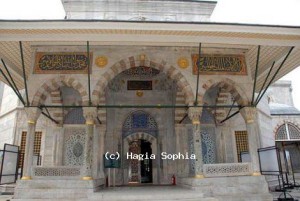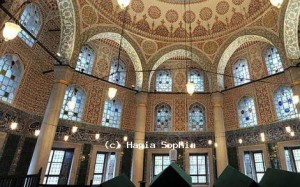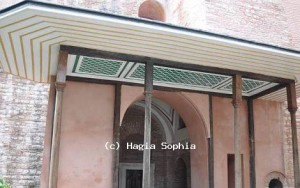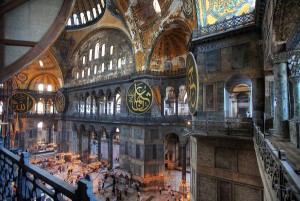A mausoleum is a free standing building that acts as a resting place for the deceased, it is common to have multiple people kept in these buildings. In close relation to a mausoleum is a turbe mausoleum, turbe is the Turkish word for tomb, these buildings are often much smaller in comparison.
There are five turbes on the Hagia Sophia property that belong to the Ottoman Sultans, their family members, and those close to them. Before the Hagia Sophia became a museum it last served as a mosque. The tombs hold from four people to 54 people. With the largest turbe, Sultan Murat III chose to house his wife, his daughters and princes, along with other courtier women. In the smallest tomb are four of Sultan Murat III’s princes and a daughter. Some of these tombs were built specifically for the men they are named after, and others had been converted to tombs after death.
Every tomb that was built, or converted, has its own unique appearance. From the exterior the Tomb of Sultan Mastafa I (pictured above) seems to be the most conservative. This tomb acted as a storage space for lamp oil before being converted to a tomb. One of the grander tombs belonged to Sultan Selim II (seen below). A special architect, Sinan, was called to complete this building, and it was was completed three years after Selim II’s death. The outside of the tomb has grand arches, with gold accenting on the columns. Every tomb has hand decorated art and ornaments throughout.

Sources:
http://www.hagiasophia.com
http://ayasofyamuzesi.gov.tr/en
Photos from:
http://www.hagiasophia.com


